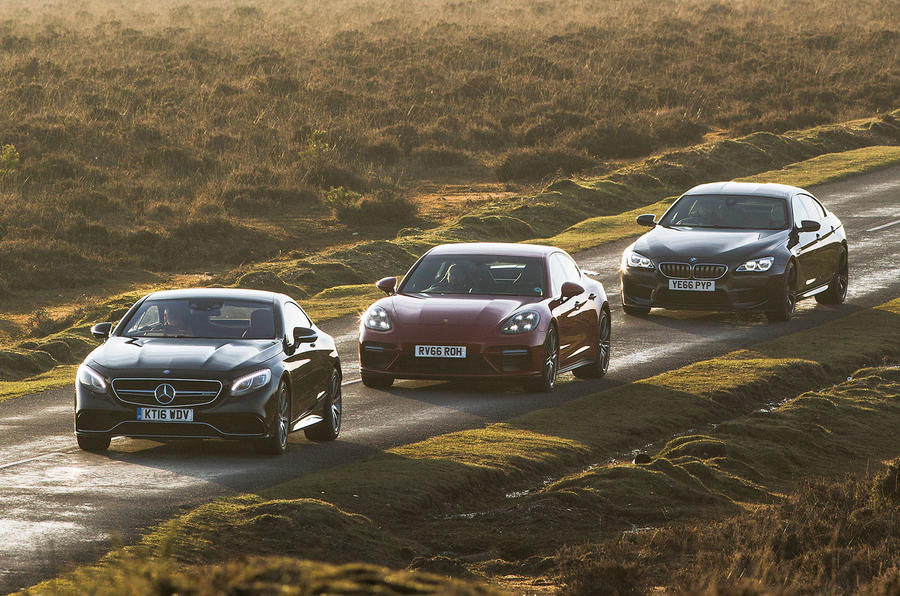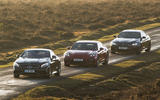Just another week, just another hot hatchback group test, eh? Arf.
The Porsche Panamera, you’ll have noticed, isn’t your typical hot hatchback, what with it being a five-metre-long, many-doored luxury coupé. Albeit a hot one. Which makes this an unusual triple test even by the standards of an increasingly diversified car market.
The second-generation Panamera reports for this test in fast-as-it-gets Turbo form. The first Panamera was a hard car to pigeonhole but an easy one to like, being part sports coupé and part super-saloon, with Porsche keen to make it feel like a true Porsche – which meant weighty steering and areas where refinement was sacrificed to dynamics.
Less so this time around, apparently. The brief for the secondgeneration car feels broader. It’s “the first true luxury car in Porsche history”, we said when we drove it in Germany last August. In Turbo specification, the new Panamera has a 4.0-litre V8 engine producing 542bhp and mated to a responsive eight-speed dual-clutch automatic gearbox, through which it drives all four wheels. All of that lives under this vast five-door, four-seat body, with individual chairs in the rear aping those in the front. They look more like lightweight sports seats than they are. There are lots of comfort-enhancing features everywhere – enough to take the air-sprung Panamera’s kerb weight to 2070kg and its price, before options, to £113,075.

Which prompts the question: what do you test it against? Hundred-and-a-bit-grand luxury five-door coupés are, perhaps unsurprisingly, remarkably thin on the ground, as evidenced by the number of times you don’t see a Panamera on the road. The action for super-saloons with the kind of grip and handling we know the Porsche offers tends to take place below this stratosphere. I suspect a Mercedes-AMG E63 saloon would give the Porsche a hard time dynamically, if not from a luxury standpoint, but it hasn’t arrived in the UK yet. And contemporary luxury saloons tend to be just that: overdosed on luxury and undernourished dynamically for a test in this company.

















































Join the debate
Add your comment
@eseaton
Wouldn't it make more sense...
Where is the Audi RS7
New CLS63 with the 4.0Litre V8 and a new M6 Xdrive are coming.All are considerably less than a decently configured Panny Turbo.Good it is, but overpriced.